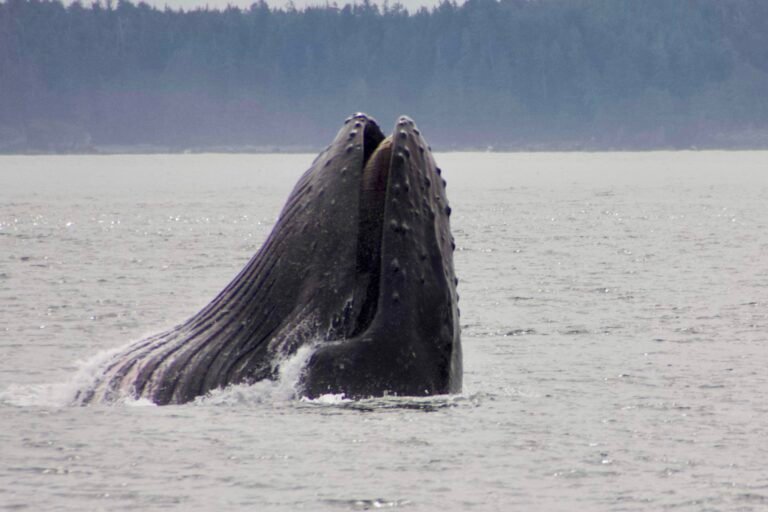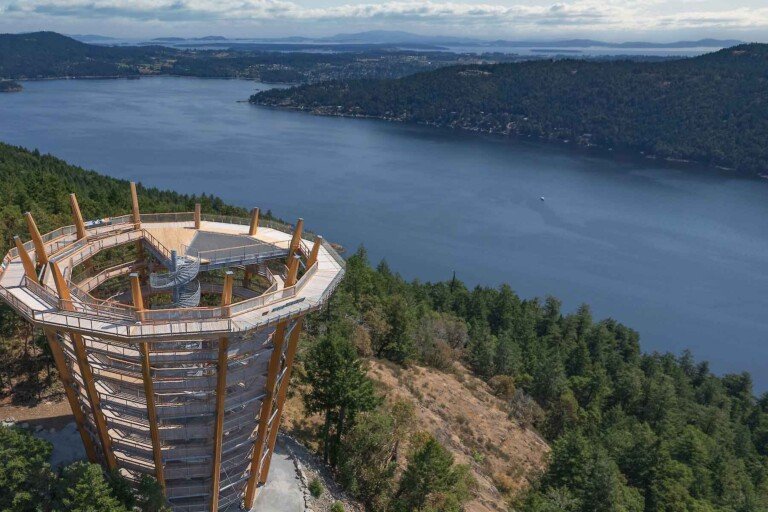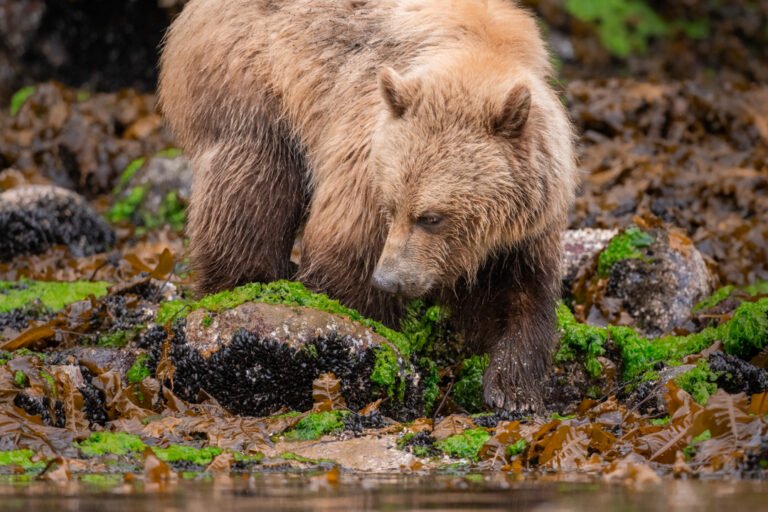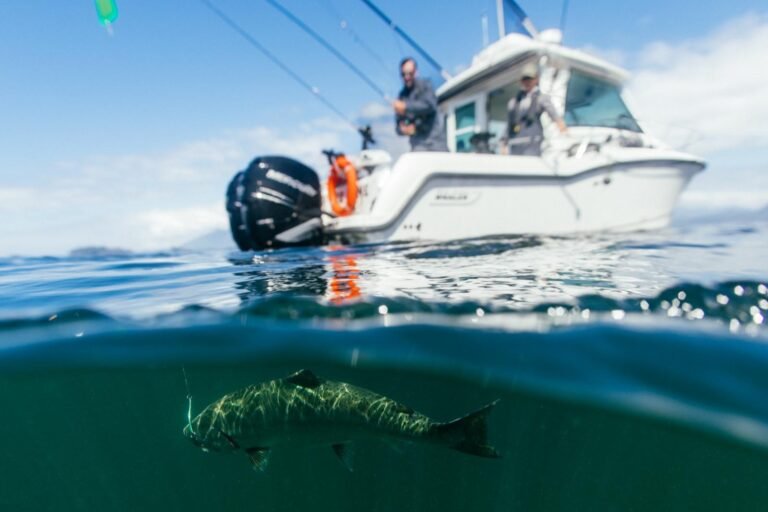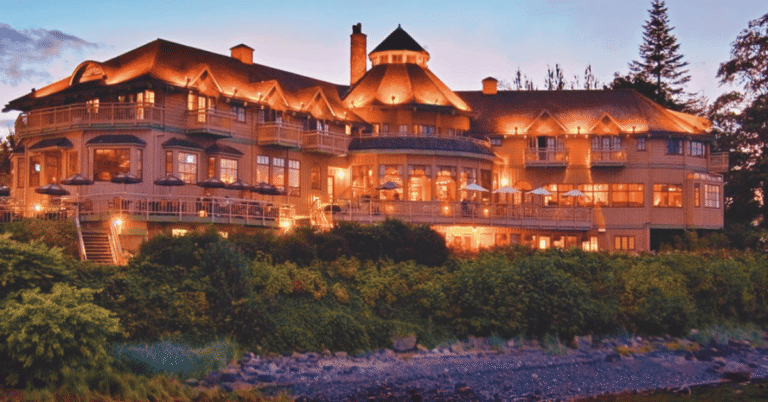The Strait of Georgia’s cold, clean waters provide the greatest diversity of Marine life in North America – “second only to the Red Sea”, according to Jacques Cousteau!
Marvellous visibility, intriguing shipwrecks, incredible corals and the giant Pacific octopus make the oceans around Vancouver Island, the Gulf Islands and the Sunshine Coast an underwater paradise for diving enthusiasts.
The coastline of the Island is richly diverse, creating many different habitats and environments for marine life. Consider the giant Pacific octopus, which grows to be the largest in the world in these waters, weighing as much as 60 kgs with tentacles stretching to over seven metres! Whether you visit these fellows residing in the Saanich Inlet, check on the progress of the artificial reef slowly taking shape offshore from Brentwood Bay or marvel at the abalone and unusual coral off Saturna Island, the waters around Vancouver Island offer some of the most rewarding dives in the world. There are numerous shipwrecks around the coast, which have become habitats for sharks, eels and octopi. Of course, these waters are also host to myriad other activities such as kayaking, sailing, and whale watching, so you need not limit your choice of recreation.
All that colour! All those fish! And the amazing clarity to see it all in! The water is not much colder than the waters of northern California, permitting diving year round. Winter diving is popular, and in some respects is even better than summer diving, as the water temperature is only a degree or two lower, but the visibility is so much better in winter. There is not as much spawning taking place, so there is far less particle matter in the water clouding visibility. Many of the dive areas are also more open and accessible as the bull kelp dies off in winter, increasing visibility and easing navigation underwater.
Vancouver Island has it all; sea caves, cliffs, walls, natural and artificial reefs, an assortment of shipwrecks plus scuttled ships and airplanes, sandy bottoms and stunning rock formations, shore and boat-based dives. From the wild Pacific coast to the sheltered marine ecosystems of the Gulf Islands, exploring a 100-year-old wreck or drifting along 1000 ft rock wall, you can experience the variety of different locations that feature unique one-of-a-kind dive experiences. If the list seems endless, it is!
Diving around Vancouver Island
Greater Victoria
The Straits of Georgia and Juan de Fuca meet in the waters off southern Vancouver Island, creating a wonderful diversity of marine life. Diving in Victoria ranks amongst the world’s best. At Ogden Point, divers continuously plunge directly off the Ogden Point Breakwater – every day of the year. An assortment of rockfish, kelp greenlings, nudibranchs, perch, and sea stars can be seen. Octopus and wolf eel also enjoy the protection of the huge granite blocks for their dens.
Off Ten Mile Point you will see a spectacular display of swimming scallops scurrying off in all directions, like a school of false teeth. There is excellent diving from Race Rocks, accessed out of the Inner Harbour by boat, with the West Wall considered to be the top dive site in the Victoria area. There, divers claim to have seen the most marine life anywhere. It is host to a combination of protected-water sea life, and outer west coast wildlife.
Further west in Race Passage lies the wreck of the Barnard Castle, a turn-of-the-century steam ship. Off the town of Sidney, where much of the diving in Greater Victoria occurs, the G.B. Church and the HMCS MacKenzie are two sunken diving reefs providing opportunity for some great underwater exploration – keep an eye out for nesting lingcod, rockfish, swimming scallops and other filter-feeding critters.
Saanich Inlet is located near Sidney on southeastern part of Vancouver Island. Although diving is good year round, during the winter months you can enjoy several excellent boat dives in Saanich Inlet with crystal clear visibility. At Senanus Island you can find great colonies of cloud sponge at 21-27 meters (70-90 feet). At times the clusters of sponge seem to dwarf a buddy! Looking carefully in the openings of the sponge, you might find small rockfish or crabs partially hidden and peering out. Saanich Inlet also has some impressive wall diving and reefs excellent for macro or close-up photography. Small kelp and decorator crabs, nudibranchs, shrimp and anemones are also easy to find at most locations. Playful seals can be found at Repulse Rock and the snorkeling is good year round at just about any site.
Other dive sites are North Cod Reef, South Bedford Island, Octopus Island, Graham’s Wall, Strongtide Island and Saxe Point. The majority of local enthusiasts dive from shore, as the excellent shore diving negates the need for costly boat dives. Most of the marine life in south island waters are found in depths shallower than 18 metres, so there is no need to go to the recreational limit of 27 metres. Dive time is therefore longer, further enhancing the diving experience.
Pacific Rim
The West Coast of Vancouver Island is known as the Graveyard of the Pacific, a name it earned as a result of the many ships that have been wrecked in the area over the past century. These wrecks, along with reefs, pinnacles and a multitude of marine plant and animal life, including an amazing variety of starfish, are a real lure for scuba divers. Local operators offer boat charters, live-aboard vessels and equipment rentals, as well as instruction and diving certification. A vast tableau of marine life thrives in the nutrient-rich waters in Dawley Passage Provincial Park, northwest of Tofino. This park is a popular local dive site. Strong currents surge through a narrow passage, which makes for clear water but sketchy conditions.
Clayoquot Sound: A selection of dive sites include Hot Springs Cove, Blunden, Meares and Vargas Islands. Reefs, walls, and rock formations in the area are covered with multicoloured bat stars and an assortment of anemone, sponge, nudibranchs, and tunicates. Located within the boundaries of the Pacific Rim National Park on the west coast of Vancouver Island, Barkley Sound is a unique wild coast wonderland. With over 100 islands in the Broken Group Islands alone, it’s easy to find a dive site even if the weather is bad. Chup Point is a good place for fish photography, usually yielding more than five species of rockfish on each dive. Yellow and white dorids, orange-peel nudibranchs, frosted and opalescent nudibranchs can be seen at Christy reef. Renate’s Reef has numerous long gray resident wolf eels of varying length and age. Not much remains of the 473-foot (142m) Vanlene since it went down in 1972 near Austin Island with its bow in shallow water and its stern unfolding down the reef like a broken puzzle. An abandoned Chinese migrant ship, approximately 100 feet in length, sits upright in 95 feet (28m) of water near Canoe Island in Sechart Channel. The hull and wheelhouse are easy to explore, with a majority of its marine residents growing on the outer hull and bow area.
Central Island
There’s no wreck like and old wreck, and that’s what the HMCS Columbia, scuttled by the Artificial Reef Society near Maud Island in Discovery Passage just north of Campbell River, is fast becoming. And you don’t actually have to dive in order to enjoy an unusual underwater experience in the Campbell River. Snorkelling here from July to September provides a rare opportunity to watch from the surface as salmon, some as large as 50 pounds (28 kg) school in the estuary in advance of spawning. Now that’s something you don’t get to do in many places in the world! Guided snorkel tours are available.
North Island
God’s Pocket Marine Provincial Park is a new provincial park where the focus is on diving and habitat protection for wildlife. God’s Pocket is made up of a group of islands, the largest of which are Bull Island and Hurst Island, about 20 km due north of Port Hardy. Most diving takes place in nearby Browning Pass, an area highly rated by the late underwater explorer Jacques Cousteau as one of the best diving locales in the world. The Wall, 7 Tree Island, Croker Rock, Hunt Rock, North Wall, Rock of Life, and Hussar Point are all great underwater photography sites. Deserter Islands features a selection of intermediate dive sites including Barry Islet, Whistler Pass, Toyman Gap, and Fantasea. Varied and abundant marine life makes for great dives in this region. Nakwakto Rapids provides advances divers a chance to experience a strong current dive with rare and unusual creatures who thrive in this nutrient rich seascape. Stubbs Island provides a number of advances current dives, along with the Blowhole and Plumper Rock. Slack tide dives reveal the top of this reef, covered in undulating kept at 15 ft. A wall descends to 170 ft, covered in sponge, anemone, basket stars, scallops and soft coral.
Nootka Sound, Kyuquot Sound and Quatsino Sound are massive fiords and channels fed from the Pacific side of the Island offering unlimited open coast dive sites along rugged shorelines. Esperanza Wall, Quatsino Narrows, and the pinnacles located between Bunsby and Rugged Point are highlights of this area.
Gulf Islands
Nanaimo and the Northern Gulf Islands offer world-class diving, particularly around Texada Island, Hornby Island, and Lasqueti Island. At Hornby Island, from July to August you can see six-gill sharks off Flora Island, the only location in the Strait of Georgia to do so – its rated among the top 10 dive sites in B.C. During the winter months diving and snorkeling with dozens of sea lions is enjoyed at Norris Rocks, located at the southern end of Hornby Island. Within the shallow water surrounding the site, you can find lingcod, greenlings, red sea urchins, scallops and huge schools of juvenile fish. Two artificial reefs created by the sunken hulls of the former naval ships the HMCS Saskatchewanand the Cape Brenton, offer spectacular dive experiences for intermediate and advanced divers. Due to strong currents, Dodd Narrows can only be dived from a boat at slack water. The Mudge Island side of the Narrows boasts heavily colonized sheer vertical faces. Wolf eels are also common in the area, and occasionally during the winter months California and Steller Sea Lions can be observed feeding on Salmon in the swift tidal stream. A photographer’s dream!
Neck Point, along time favorite of local Nanaimo divers is a rocky peninsula with fringing islets and pinnacles where the east face of the peninsula is a rock walls that tumbles down to 25 metres. In winter months the wall is cruised by curious Sea Lions. Four Fathom Reef is know locally as a prolific spawning ground for all species of Rock Fish, Lingcod, Greenling, Spiny Pink Scallops and Giant Pacific Octopus. At this location divers have a good chanse of seeing the Octopus out of their dens and active during daylight hours. An underground pinnacle rises as shallow as 8 metres from a surrounding sea floor depth. Wolf Eel and Giant Pacific Octopus can be seen on occasion at Clarke Rock. Dual pinnacles come as close as metres from the surface and stand at least 30 metres from the sea floor.
Jesse Island located in Departure Bay in Nanaimo boasts at least three separate, yet distrinct dive sites in very sheltered conditions and is a very popular nightdive location. Each site has a unique ecology ranging from rock pillars, sea caves, walls, gentle bottom slopes and pinnacles. Snake Island is home to a large population of harbour seals that appear clumsy and awkward as they lay on the rocks surrounding the island, it offers unique snorkeling or viding opportunities. The seals are inquisitive and will commonly approach a diver to within several feet. On the west side of Snake Island is a short shelf extending out to 50′ at which point the bottom drops away to in excess of 200′ immediately. The wall is covered with White Plumose Anemones, Boot sponge, Cloud sponge, and in addition, a much more invertebrate marine life.
The Southern Gulf Islands are easily reached by ferry out of Swartz Bay, just north of Victoria. Off Pender Island, the Tilly Point Caves are like a dream, full of florescent anemones and giant Dungeness crabs. You can enter through one opening and exit through another. Much of the area around these islands is an underwater reserve, its importance easily comprehended once you’ve had the privilege of visiting it. Strong currents surge through Porlier Pass, located between Galiano and Valdes Islands. Explore Boscowitz Rock, the wreck of the 105 ft tug Point Grey or shore dive at Pringle Park and Coons Bay. The undersea life is abundant, with large ling cod darting among green and purple sea urchin, nudibranch, Puget Sound king crab, war bonnet, white pulmose and a variety of rock formations. There are many superb dives in the area, and charter operations abound.
For the passionate diver there are limitless opportunities for exploration around Vancouver Island. The unrivalled beauty of the West Coast and the variety of wild and marine life make it a vital destination for those interested in the sport.


